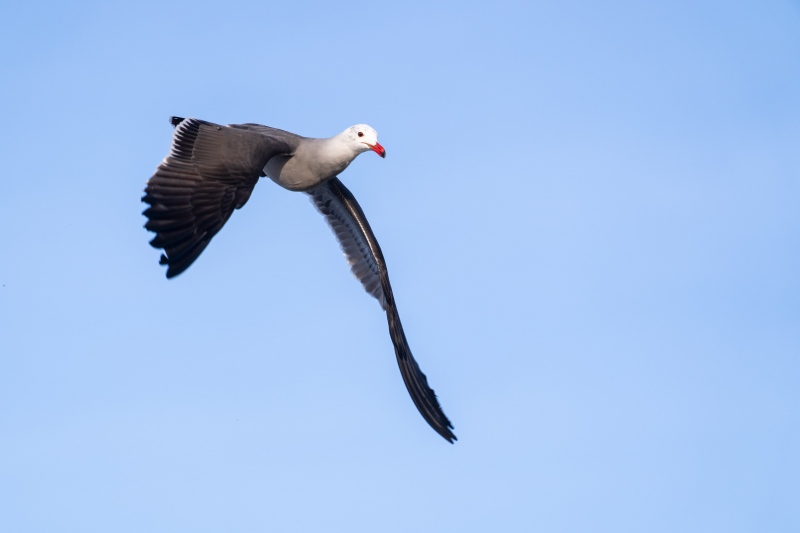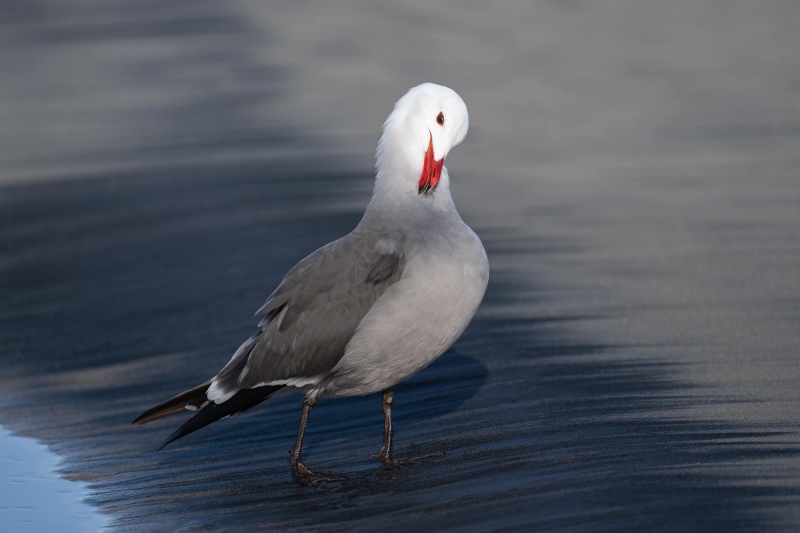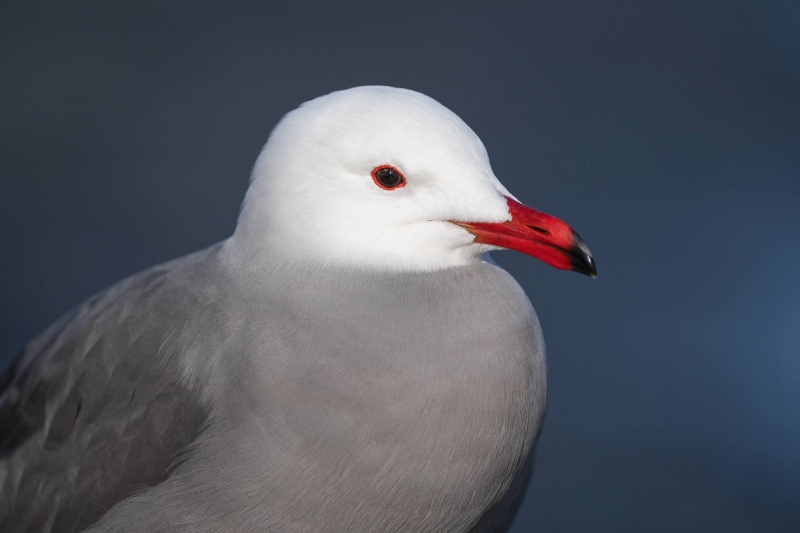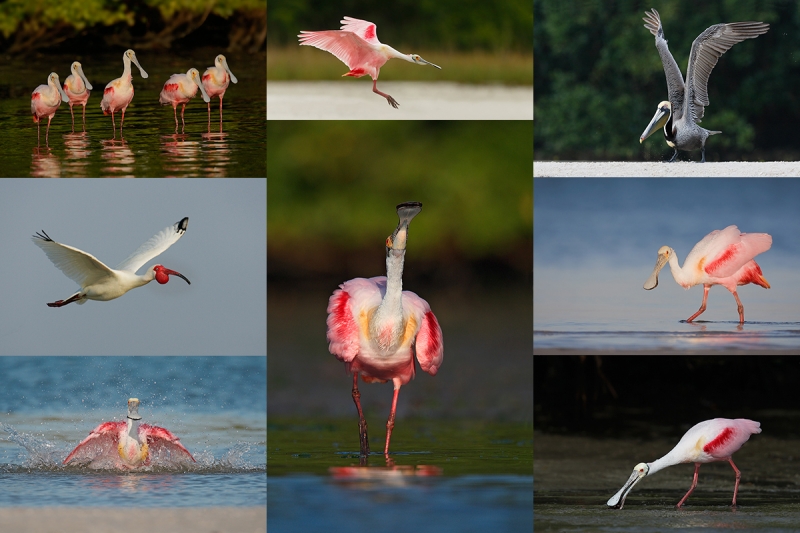What’s Up?
With the high surf in La Jolla, the usually easy to photograph Heermann’s Gulls have been hard to come by. On Wednesday morning I took somewhat of a gamble by heading to the beach at Coronado. I grabbed the 200-600 and the 70-200 and enjoyed a very successful morning, As the tide dropped, large groups of shorebirds fed on the edge of the surf: Willets, Marbled Godwits, Sanderlings, two Red Knots, and a single Black-bellied Plover. To get on sun angle, I walked into the surf with my hiking boots on while my surf booties were warm and dry on the floor behind the driver’s seat of my rental car. Duh!
In the afternoon, I walked two miles down and up at Torrey Pines State Preserve. I did the Yucca Point Overlook, Razor Point, and Red Butte trails. It sure is a beautiful place. A gorgeous adult Red Tail sat in full sun at the top of a Torrey Pine, flew off to the south, and then returned to its lofty green perch.
Today is Thursday 19 January 2023, Day 1 of the third and final San Diego IPT. I will be meeting Barbara White (Sony a1 and 200-600) and Brannigan Leishman Canon R5 and 100-500) early at the cliffs. The forecast, which had been calling for mostly cloudy all day, is now calling for clear and sunny for most of the day with a gentle breeze from the ENE. All good. This blog post took more than two hours to prepare (Including the time spent on the three image optimization and makes two hundred ninety-six days in a row with a new, educational post. Wherever you are and whatever you are doing, I hope that you too have a great day.
I fly back to Florida this coming Tuesday. Please remember to use my B&H or Bedford’s affiliate programs for your new gear purchases.
There are just two spots left on the 2023 Spoonbill Boat 1-1/2 DAY MINI-IPT. Scroll down for details.
The plan is to continue to post every day until the streak reaches one year and one day and then go back to posting every other day.
Please remember to use the B&H and Amazon links that are found on most blog pages and to use the BIRDSASART discount code at checkout when purchasing your new gear from Bedfords to get 3% back on your credit card and enjoy free second-day air FedEx. Please, also, consider joining a BAA IPT. You will be amazed at how much you will learn!
You can find some great photo accessories (and necessities, like surf booties!) on Amazon by clicking on the Stuff tab on the orange/yellow menu bar above. On a related note, it would be extremely helpful if blog-folks who, like me, spend too much money on Amazon, would get in the habit of clicking on the Amazon logo link on the right side of each blog post when they shop online. As you might expect, doing so will not cost you a single penny, but would be appreciated tremendously by yours truly. And doing so, works seamlessly with your Amazon Prime account.
Please remember that if an item — a Delkin flash card, or a tripod head — for example, that is available from B&H and/or Bedfords, is also available in the BAA Online Store, it would be great, and greatly appreciated, if you would opt to purchase from us. We will match any price. Please remember also to use my B&H affiliate links or to earn 3% cash back at Bedfords by using the BIRDSASART discount code at checkout for your major gear purchases. Doing either often earns you free guides and/or discounts. And always earns my great appreciation.
Induro GIT 304L Tripod
Out of production for more than two years, BAA just sold its last one. The good news? We have located two more new-in-the-box tripods. They will be available for shipping at the end of January. Best to order yours now to be sure that you get one. We will not run your card until your item ships. The 304L was my go-to tripod for more than a decade. Best to grab order yours right now to avoid being disappointed.
|
|
|
This image was created on 18 January 2023 on the beach at Coronado, CA. Standing at full height, I used the handheld Sony FE 70-200mm f/2.8 GM OSS II lens with the Sony FE 1.4x Teleconverter (at 221mm) and The One, the Sony Alpha 1 Mirrorless Digital Camera.. The exposure was determined via Zebras. ISO 800: 1/3200 sec. at f/4 (wide open) in Manual mode. AWB at 8:10:10am on a slightly hazy morning. Tracking: Zone AF/C with Bird-Eye/Face Detection performed perfectly. Click on the image to enjoy a high-res version. Image 1: Heermann’s Gull turning in flight |
Focal Length Coverage
When choosing which lenses to bring into the field on a given day, one factor to be considered is the focal length coverage, the range that begins with your shortest focal length and ends with your longest. If, for example, you opt for the 200-600 and the 400mm f/2.8, the 200-600 overlaps the 400mm focal length completely (albeit 2 1/3 stops slower at f/6.3). Pairing the 70-200 with the 200-600 however, gives you perfect focal length coverage from 70-600mm. And you can get to 840mm by adding the TC to the big zoom. The fact that it was sunny made choosing the 200-600 an ideal one.
The 70-200 hung on my right shoulder via a Black Rapid Curve Breathe Strap. (Remember to tighten the bolt securely every time that you pick up your rig.) I handheld the 200-600 and placed is carefully on the beach when I need the short zoom.
|
|
|
This image was also created on 18 January 2023 on the beach at Coronado, CA. Seated on very damp sand, I used the knee-pod technique with the handheld Sony FE 200-600mm f/5.6-6.3 G OSS lens (at 588mm) and The One, the Sony Alpha 1 Mirrorless digital camera. ) The exposure was determined using Zebra technology with ISO on the Thumb Dial. ISO 640. 1/2500 second at f/6.3 (wide-open) in Manual Mode. AWB at 8:43:24am on a sunny morning. RawDigger showed the exposure to be dead-solid perfect. Tracking: Spot S AF-C with Bird Face/Eye Detection performed perfectly. Be sure to click on the image to enjoy a high-res version. Image #2: Heermann’s Gull in full breeding plumage preening side of neck
|
The Black Sand
On the lower tides, there are large areas of black sand on the beach at Coronado. They are often intermixed with the normal, tan-toned sand. As the tide drops, there are often some really neat patterns that you can use to create new and different photos. The Heermann’s Gull in Image #2 stopped in a spot where a patterned band of black sand ran parallel to the ocean and provided a dramatic, unique setting for the image. The patterns in the black sand are formed by the dropping tide. The patterns often resemble forests of odd trees and are often worth photographing on their own.
In Image #2, note the perfect preening head angle.
|
|
|
This image was also created on 18 January 2023 on the beach at Coronado, CA. Again, seated on very damp sand, I used the knee-pod technique with the handheld Sony FE 200-600mm f/5.6-6.3 G OSS lens (at 600mm) and The One, the Sony Alpha 1 Mirrorless digital camera. ) The exposure was determined using Zebra technology with ISO on the Thumb Dial. ISO 500. 1/3200 second at f/6.3 (wide-open) in Manual Mode. AWB at 8:54:31am on a sunny morning. RawDigger showed the exposure to be perfect. Tracking: Spot S AF-C with Bird Face/Eye Detection performed perfectly. Be sure to click on the image to enjoy a high-res version. Image #3: Heermann’s Gull in full breeding plumage — tight portrait
|
Sony 200-600 Versatility
As noted here often, the Sony 200-600 lens alone is a great reason to abandon your current system and switch to Sony. By comparing Image #2 (where I had to zoom out of bit), with Image #3, (made at 600mm — actually at a bit less when you take focus breathing into account), you can see the amazing versatility of the 2-6. And it is often perfect for creating bird-scapes by zooming out to focal lengths of between 200 and 400mm. Throw in a Sony a1 and a 1.4X TC and you have a perfect kit for bird photography for just about $10K.
Your Call?
Which of today’s very strong featured images do you like best? Why? I do have a favorite.
|
|
All images on this card were created by Arthur Morris on the Hooptie Deux at Alafia Banks |
2023 Spoonbill Boat 1-1/2 DAY MINI-IPT: $1199.00.00. Limit: 5 photographers/Openings: 2.
A full day on WED 15 FEB and the morning of Thursday 16 FEB 2023: 1 1/2 days.
Two morning and one afternoon photo session (weather permitting) via customized pontoon boat.
For early-arriving folks, artie is throwing in a free afternoon In-the-Field session at a little-known but very active rookery in North Tampa on Tuesday 14 February.
We will be leaving the dock in Gibsonton, FL very early for the morning sessions in hopes of photographing a pre-dawn White Ibis blast-off and creating some dramatic silhouettes or pleasing blurs. The morning sessions are planned for the Alafia Banks Roseate Spoonbill Rookery. We have several options for the afternoons including returning to Alafia. We may spend one afternoon on foot at the North Tampa rookery mentioned above. There will be lots of opportunities for flight photography of several species including and especially Roseate Spoonbill. Also likely for flight photography are nesting Brown Pelican, Great Blue Heron, and Double Crested Cormorant, many carrying nesting material. This IPT includes all boat and guide fees, in-the-field instruction from two great leaders, chest waders (feel free to bring your own of course to assure a perfect fit), and three working lunches (Monday thru Wednesday). For the most part we will be standing in mid-calf to knee-deep water behind our tripods. We help you get in and out of the boat safely with your gear. This is likely not the best trip for folks with mobility or balance problems. Note however that some folks opt to stay on the boat to photograph. They usually have lots of chances for flight photography of spoonbills and other species but are almost always pretty far away from the spoonbills that land.
Mid-February is prime time for photographing spoonbills at the absolute peak of breeding plumage. For unknown reasons, the spoonbills at Alafia are much more colorful than the birds that breed at Stick Marsh later in the season. The Hooptie IPT represents an incredible opportunity and I do hope that you can join us. All of the images on the cards were made on the Hooptie Duex during the last two weeks of February, prime time for the spoonies in mega-breeding plumage.
You may hold your spot with an e-mail request. Then, you may either secure your spot by calling Jim or Jennifer at the office at 863-692-0906 and leaving the $599 deposit on credit card or sending your check for payment in full to us as follows with the check made out to:
BIRDS AS ART
Please send it via US mail here:
BIRDS AS ART
PO BOX 7245
Indian Lake Estates, FL 33855
If you call to leave your deposit, you will be asked to mail your check for the balance ASAP. Be sure to give us your e-mail address.
|
Images courtesy of our guide; copyright 2017 Captain James Shadle (aka Froggie). All of the images here were created at Alafia Banks. Card creation and design by Arthur Morris/BIRDS AS ART. |
Everybody Wants Spoonbills!
Roseate Spoonbill is one of if not the most sought after avian photographic subjects in Florida. They are generally hard to find and somewhat difficult to approach. They are relatively easy to find at Alafia Banks—heck, you can’t miss seeing them, but even there they can on some days be somewhat difficult to approach. On some days we may be able to get ridiculously close to them. The huge incentive to get out to Alafia Banks in mid-February is the chance to photograph this species at the height of its spectacular breeding plumage…. with long telephoto lenses. A 500 or 600 with a 1.4X TC is perfect for flight.
As above, there will — weather permitting — three boat trips — 2 mornings and 1 afternoon — on this MINI IPT. All to Alafia Banks for spoonbills and Brown Pelicans (with lots of flight photography often with the birds likely carrying nesting material), Double-crested Cormorants, ibises (both Glossy and White) in breeding plumage. Many of the White Ibises will be sporting their spectacular, distended, red, naked (un-feathered) throat pouches—typically larger in the females. In addition, we may get to photograph egrets including Great and Reddish, both in full breeding plumage, shorebirds, and more. There will be lots of flight photography opportunities. Afternoon trips either to Alafia Banks for spoonbills and more or to a more sheltered inland rookery location for a variety of nesting birds. In the event of horrific weather artie will either take the group to Fort DeSoto or will conduct an image review/Photoshop session. This IPT includes lunches on the full day with small group image sharing and review and some over-the-shoulder Photoshop instruction.
Typos
With all blog posts, feel free to e-mail or to leave a comment regarding any typos or errors.



















Beautiful sand in #2!
Image #2 is absolutely beautiful, and my favourite!
>> If, for example, you opt for the 200-600 and the 400mm f/2.8, the 200-600 overlaps the 400mm focal length completely (albeit 3 1/3 stops slower at f/6.3). <<
It seems to me that that's not 3 1/3 stops slower. 3 stops slower than f/2.8 would be f/8. Maybe it's 2 1/3 stops slower…?
2 1/3 stops is correct. Thanks. Seven clicks of ISO higher.
a
My favorite is #2. The light on the gull’s head is lovely. And there is a nice pattern up the black sand. It’s like the bird is standing at the bottom of a stairway. Plus there is behavior–preening. The red/orange bill draws your eye because of its contracting color with white/grays/ blacks and leads up to the bird’s eye. Unique and beautiful to me.
All three images of Heermann’s Gull are interesting and good and well made!
Artie: image 1 is my favorite, great pose. Typo “As the tide dropped, are groups of shorebirds fed on the…., “